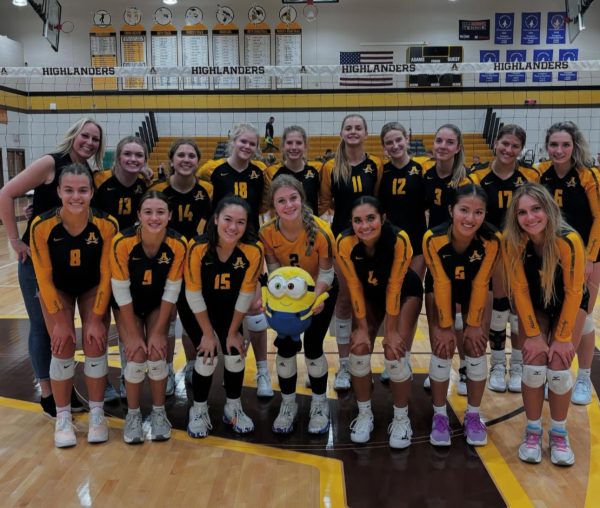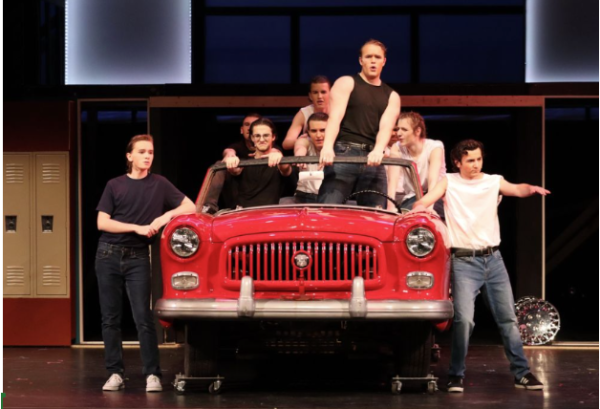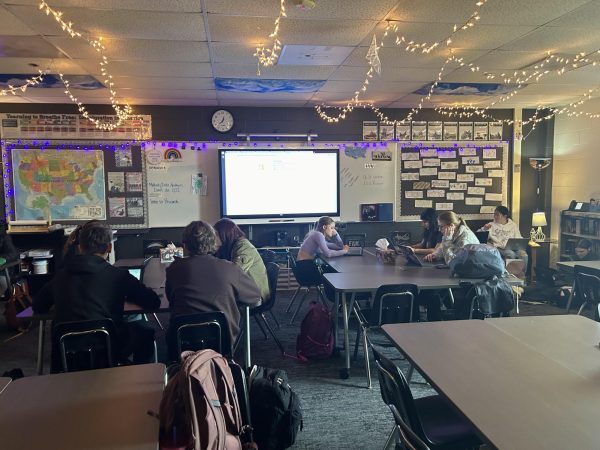Adams Struggles with Overcrowded Classrooms

Mrs. Schwartz’s classes are overfilling with students.
After suffering through elementary and middle school, students have come to know what is expected of them, as well as what to expect, on the first day of school. Students find themselves in a haze of unexpected confusion this year as class sizes soar above thirty, leaving some students without a seat.
“I’ve had some big some classes; collectively, my class size are larger this year,” said social studies teacher Mark MacFarland, “For example, I have three classes with 38 students, and then one with 34 and one with 33. I’ve had some big classes previous years, but not as many big classes.”
Some classes are bigger than others, although all are increasingly more crowded than they have been in the past. Classes are allotted a particular number of students depending on the subject. Music and physical education classes have a very high limit. Lab-based classes, such as chemistry, physics, and biology, however, have a lower cap based on the number of lab stations available in the classroom.
With the surplus of students, classrooms lack proper seating for the entire class, forcing students and teachers to improvise with what is available. “There are almost thirty people in each of my classes. In math, we didn’t have enough room for everyone, so one girl has to sit in the corner all alone,” said Senior Klara Schmidt.
“I think some people sit on the counter, some people have those wheely chairs. They just kind of cluster wherever they can,” said fellow Senior Anna Carl.
Administration is doing what they can to help solve the issue of seating. “We’ve been distributing some chairs and what furniture we have left to help fix that. We just ordered another set of desks to make sure all our students have a desk,” said Assistant Principal John Kelley.
Overcrowded classrooms present other problems besides the physical aspect. Teachers and students are confronted with new obstacles involving the exacerbated unequal ratio of students to teachers.
“There’s a lot more room for people to talk. The teacher can’t really pinpoint where it’s coming from. It’s definitely distracting,” said Schmidt.
Adams’ teachers are discovering a plentitude of challenges which accompany larger classes, including many issues involving their curriculum; the size of a class can affect the work done in classroom and the homework assigned.
“I try not to let it [the size of the class] dictate what I want to do in class in the terms of what I assign and doing things in group,” said MacFarland. “I will say sometimes, because of the larger size, you have to be careful on how you do groups and how we space out the class assignments. It is what it is with large class sizes.”
Changing schedules has become increasingly difficult due to the overload of students. With every class filled to the brim, there is little to no wiggle room for schedule changes or adaptions.
“That [scheduling] depends on a variety of things, like our enrollment and course requests. If a lot of kids request a class, we staff based on that,” Kelley said.
Last year, Adams was faced with a similar problem involving strict schedules and crowded classes. Optimistically, administration hoped to solve that issue by the beginning of this card marking; however, hope for smaller classes second semester seems to dissipate as the year goes on and rectifications of class numbers remain unseen.
Although it is difficult, Adams’ teachers and students alike are working together to make the best of this dire situation.
“Can we still do great things in a large class? Yes we can,” said MacFarland.






